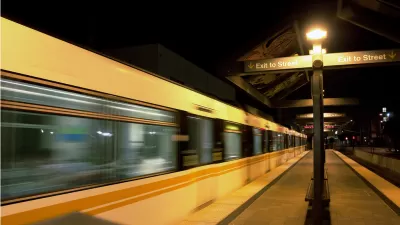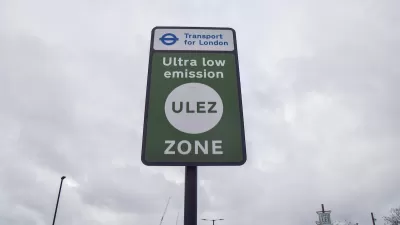Research suggests that transit subsidies produce minimal social value when combined with congestion pricing and dedicated bus lanes.

A study by Leonardo Basso and Hugo Silva uses data from the cities of London and Santiago to gauge traffic policy effectiveness. "In new research, we provide a new assessment showing that the benefits of transit subsidization are large only when optimal congestion pricing and dedicated bus lanes are not in place or when policymakers wish to give the most help to the poorest (vertical equity)."
Taken individually, subsidies still may be the best option to improve general access. From the article: "Importantly, if instead of considering direct willingness to pay we correct for income differences because of vertical equity considerations, optimal subsidization can become the best stand-alone measure, with bus lanes and congestion pricing being less substitute measures."
The trade-off between bus lanes and subsidies depends on how much value frequent service provides. "Segregating traffic through bus lanes seems to be particularly appealing, as it achieves large welfare improvements without subsidies or cumbersome car congestion tolling, affecting bus and car travellers through quality of service (speeds) instead of monetary prices."

Maui's Vacation Rental Debate Turns Ugly
Verbal attacks, misinformation campaigns and fistfights plague a high-stakes debate to convert thousands of vacation rentals into long-term housing.

Planetizen Federal Action Tracker
A weekly monitor of how Trump’s orders and actions are impacting planners and planning in America.

In Urban Planning, AI Prompting Could be the New Design Thinking
Creativity has long been key to great urban design. What if we see AI as our new creative partner?

Pedestrian Deaths Drop, Remain Twice as High as in 2009
Fatalities declined by 4 percent in 2024, but the U.S. is still nowhere close to ‘Vision Zero.’

King County Supportive Housing Program Offers Hope for Unhoused Residents
The county is taking a ‘Housing First’ approach that prioritizes getting people into housing, then offering wraparound supportive services.

Researchers Use AI to Get Clearer Picture of US Housing
Analysts are using artificial intelligence to supercharge their research by allowing them to comb through data faster. Though these AI tools can be error prone, they save time and housing researchers are optimistic about the future.
Urban Design for Planners 1: Software Tools
This six-course series explores essential urban design concepts using open source software and equips planners with the tools they need to participate fully in the urban design process.
Planning for Universal Design
Learn the tools for implementing Universal Design in planning regulations.
planning NEXT
Appalachian Highlands Housing Partners
Mpact (founded as Rail~Volution)
City of Camden Redevelopment Agency
City of Astoria
City of Portland
City of Laramie





























